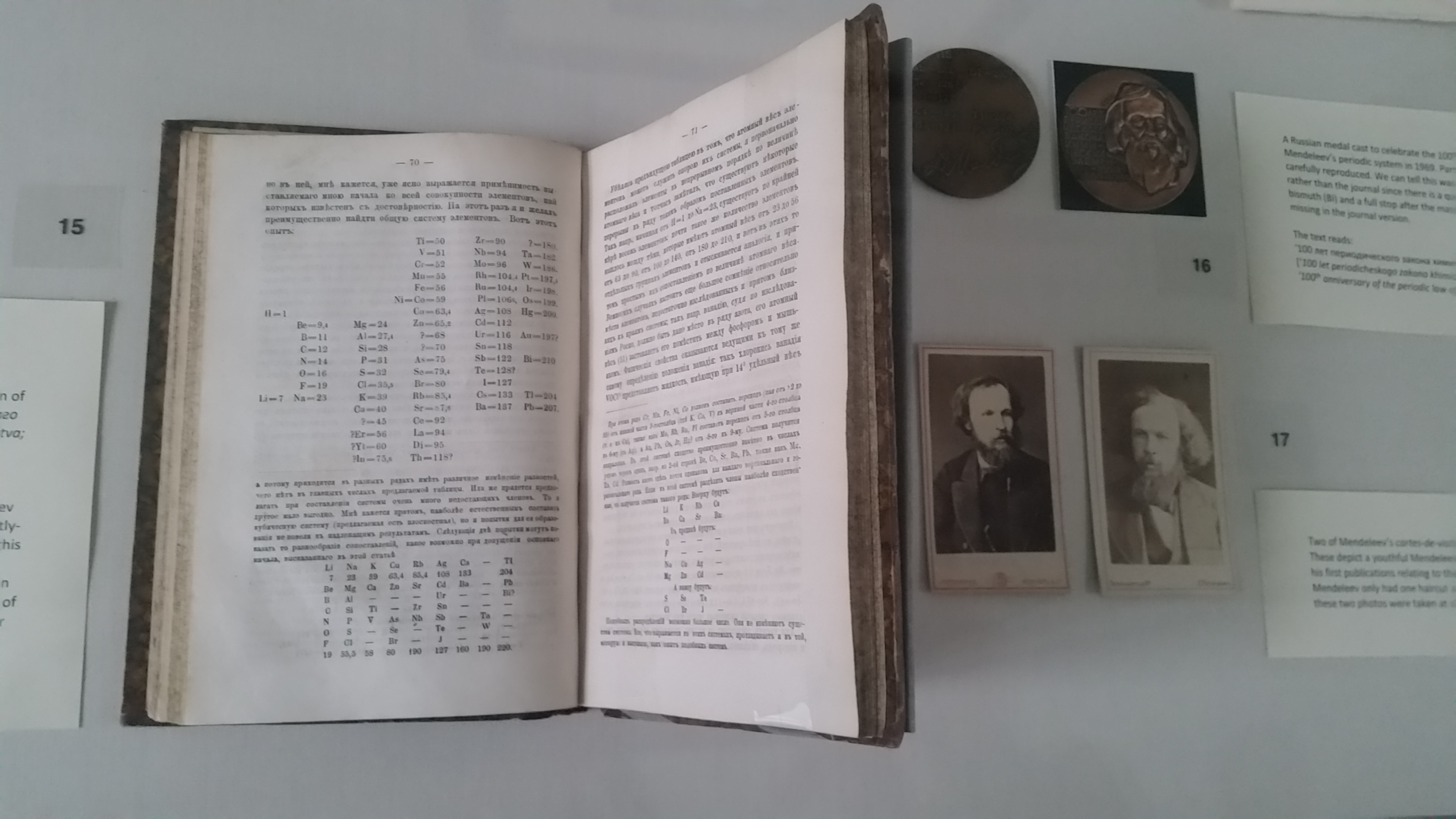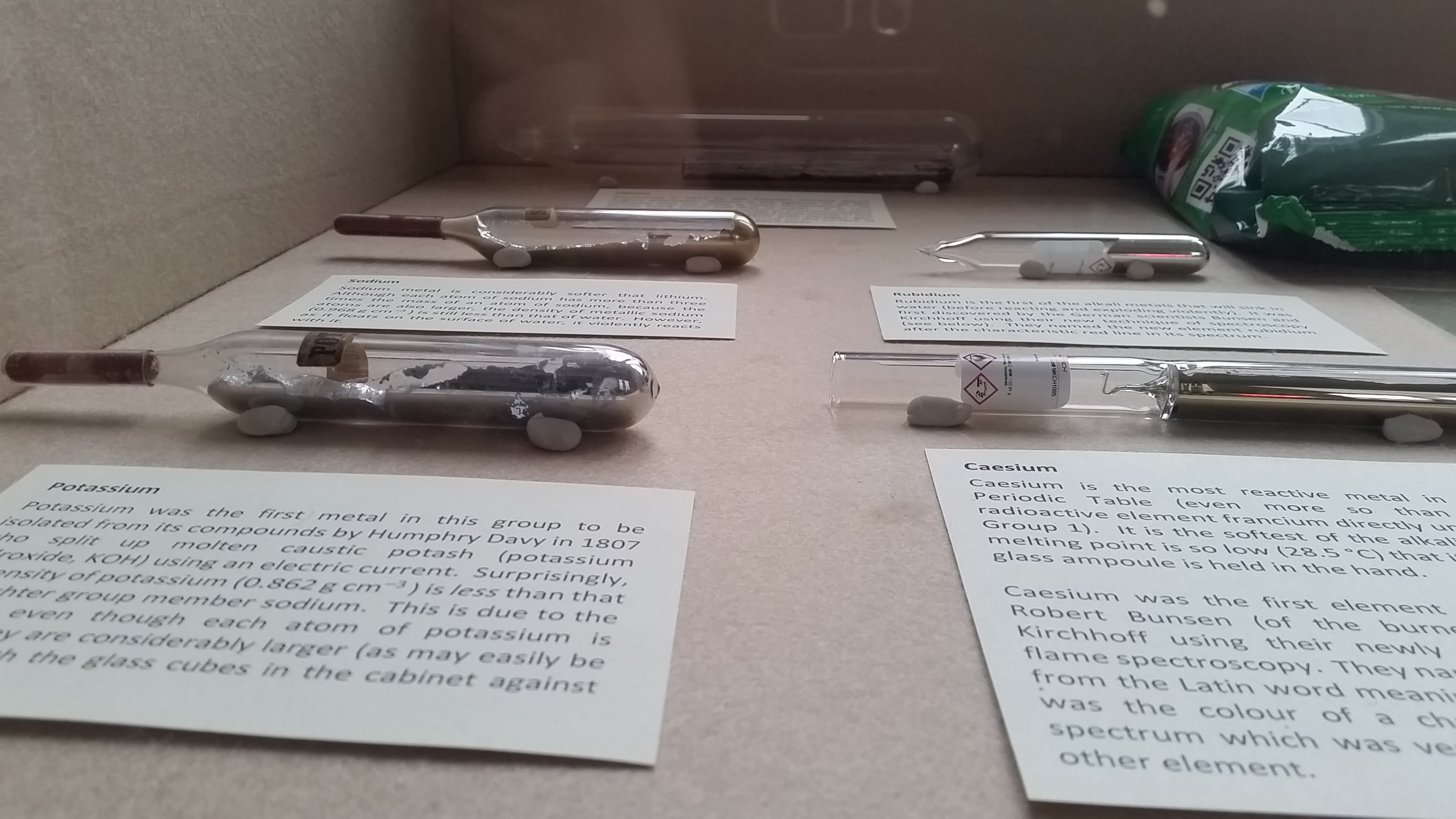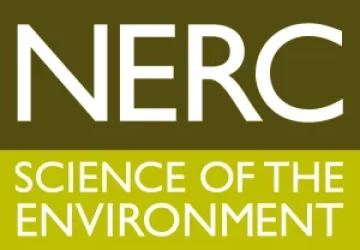By Andrea Chlebikova, PhD Student in the Department of Chemistry

I am a PhD student in atmospheric chemistry, trying to improve our understanding of some of the reactions happening in the air around us that can form secondary pollution. In practice, my day-to-day work mainly consists of writing code. But my scientific interests are not limited to a narrow sub-field, and while I enjoy my research, I miss using my knowledge of – as well as learning more about – other parts of science. One way I have found of solving that issue involves getting involved in scientific outreach work. This allows me to explore new concepts while interacting with people from a diverse range of backgrounds, something I also enjoy. It is always a great pleasure to see people’s eyes light up with excitement about science, whether young or old, previously interested in science or not at all.
As some of you may know, 2019 marks the 150th anniversary of Mendeleev’s publication of his periodic table of the elements. To celebrate this, the UN has declared this year the International Year of the Periodic Table (#IYPT2019). Many organisations have come up with different ways of marking the occasion. Among these, St Catharine’s College, of which I am a member, hosted an exhibition on the topic. The project was the brainchild of Dr Peter Wothers, a chemistry fellow of the college. As an ardent collector of old chemistry texts and arcane chemistry artefacts, Peter was well placed to annotate the exhibition, comprised of both items from his own personal collection and books owned by the college.
The exhibition could vaguely be divided into three parts. In the centre, a trail of textbooks told a story of the progression of chemistry knowledge relating to elements, starting with the work of alchemists and via the oldest version of the Periodic Table (not Mendeleev’s, but rather Chancourtois’s helix from 7 years before), of course including several editions of Mendeleev’s table and also other chemists’ attempts from around the same time, through to later editions featuring elements Mendeleev successfully predicted (such as gallium) and the noble gases. Not even Mendeleev was flawless, however, as is evidenced by one of these later versions featuring a periodic table where he implied the existence of two elements lighter than hydrogen!


The sides of the room were lined with chemical samples and demonstrations of the elements in action, the eight windows conveniently providing space for the eight main groups of the periodic table. This allowed visitors to put the periodic table into context, and familiarise themselves with the different roles various elements play in everyday (and not so everyday!) life. One of my favourites from this part of the exhibition was a functional light meter exploiting the properties of selenium, as well as the rather large samples of the elemental halogens (well, chlorine, bromine and iodine, anyway!).

The final part of the exhibition was formed by periodic table artwork, some of which had been specially commissioned by St Catharine’s College. We were proud to present the St Catharine’s Periodic Spiral, fashioned from silver, with a few special tiles made from hallmarked metals for the respective elements, and a small diamond included in the carbon tile. The final element of the standard periodic table, Oganesson (number 118), is named after Professor Yuri Oganessian who came to open the exhibition and completed the spiral with the final tile which bears his signature. The periodic spiral is a truly remarkable piece of art and science alike, and despite its unusual design can serve functionally as a periodic table just as well as – if not better than – more traditional designs. I am, however, equally fond of our other specially-made artwork which depicts the atomic orbitals (in essence, where the different electrons are) from 1s through to 7p, in laser-etched glass cubes. This set, also arranged into a periodic table shape, was perhaps most appreciated by people who were familiar with the concept of orbitals but have not previously seen them visualised so effectively. Also featured was a Macramé periodic table made by Jane Stewart.

All in all, I greatly enjoyed helping to make the exhibition a reality and guiding visitors from a wide variety of backgrounds through it. One thing I had never truly appreciated before is how so much knowledge about the periodic arrangement could be ascertained a long time before anyone had any understanding of the underlying principles. The modern periodic table is arranged by atomic number, the number of protons in an element’s nucleus, and this is one of the first things we learn in chemistry at school. Yet protons were only discovered around five decades after the first periodic tables emerged. The way we think about the world around us, having been taught atomic theory and composition at a young age, is very different from the perspective of chemists in the 19th century. Nowadays, the ideas behind the periodic table may seem quite basic (to chemists, at least!), and so we rarely appreciate the ingenuity that was required to arrange the elements and spot the patterns present before people understood what electrons were, how electron configuration depends on the atom in question, and how this in turn affects reactivity.
An online version of the exhibition will soon be available, so do keep an eye out!
Since writing, Professor Yuri Oganessian has been made an honorary fellow of St Catharine’s College.

